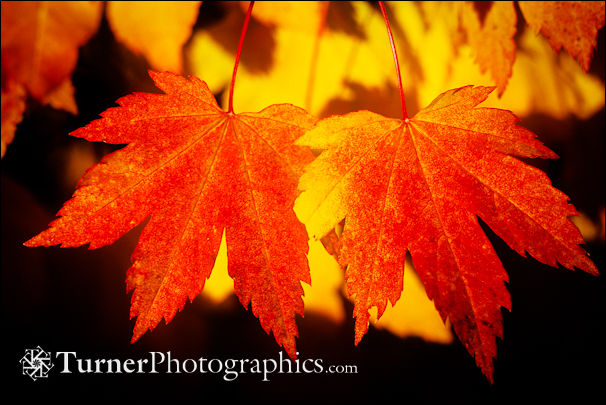Plant of the Month: Vine Maple
Small maples, and in particular Japanese maples, are wildly popular plants in northwest gardens. There’s an almost endless variety of foliage shape and color. They provide year-round interest with intricate winter structure, soft hues of unfurling foliage in early spring accompanied by delicate flowers, rustling leaves in summer’s breezes, and brilliant autumn color.

Our native westside vine maple, Acer circinatum, also makes a good garden specimen and shares many of the desirable characteristics of its cousins from across the Pacific. In its native habitat vine maple is usually an understory tree, weaving its way up toward the light in forest openings. It rarely grows more than 20 feet tall and is sometimes found as a multi-stemmed large shrub. Vine maple gets its common name from its often twisted stems and branches that resemble large vines. The bark on young stems is greenish, furthering the vine-like appearance.
Vine maple is one of our showier native trees and shrubs when it comes to fall color. The leaves turn brilliant shades of red, orange, and yellow each autumn. Once the leaves drop the trunks also provide good winter interest to the garden. In the spring pairs of delicate pendant reddish flowers appear about the same time as the new foliage.
In a garden setting, give vine maples a little sun and a cool, moist root run. They’ll grow a foot or two a year, reaching maturity relatively quickly. Like other maples, Verticillum wilt can occasionally be a problem, but overall vine maples are generally free of pests and diseases.
There are a handful of horticultural cultivars now on the market. One I particularly like is ‘Pacific Fire,’ which has reddish winter stems much like a coral-bark Japanese maple. It’s a smaller tree, topping out at about 8 feet. ‘Monroe’ has finely cut leaves and matures to about 15 feet.
One thing to consider before planting a vine maple is that deer find them a delicious browse in all seasons. If you have deer you may need to protect your newly planted maple until it gets big enough to fend for itself. According to the US Forest Service, “The seeds, buds, and flowers of maples provide food for numerous birds and small mammals. Squirrels and chipmunks eat the seeds, frequently storing them in caches after removing the hull and wing. Numerous birds use the leaves and seed stalks of maples for nest building.”

